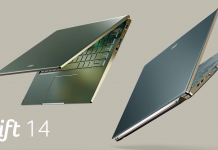Last updated on December 8th, 2022 at 02:23 pm
Intel talks about 28-core 10nm Ice Lake processor for servers and HEDT
At the HotChips 32 industry conference held these days, Intel revealed details of its forthcoming Ice Lake-SP server processors. These are the first 10nm Intel processors that will step outside the mobile segment, and the first “big” Intel processors, which are based on a more perfect microarchitecture than Skylake.
Don’t forget to leave us a comment below and let us know what you think!
Share Our Website for Technology News , Health News , Latest Smartphones , Mobiles , Games , LifeStyle , USA News & Much more...





